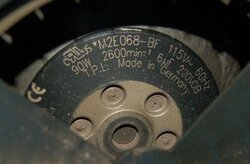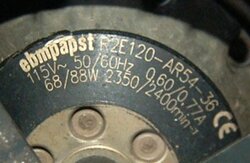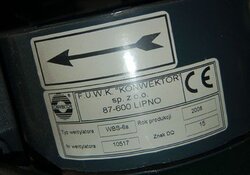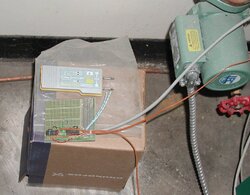slowzuki
Minister of Fire
Ok a quick example/problem, skipping the data conversions:
100 kBTU of dry basis wood is burned at 95% combustion efficiency. 20 kBTU is required to free the water contained due to the latent heat of evaporation and the specific heat of the same water. With a 95% efficient heat transfer to the boiler jacket (assume no heat loss in the boiler), how many kBTU are delivered to the water jacket? What is the total efficiency of the conversion of the wood to usable heat?
100 kBTU x 0.95 = 95 kBTU
95 kBTU - 20 kBTU = 75 kBTU
0.95 x 75 kBTU = 71.25 kBTU Delivered to water jacket
71.25 / 100 = 71.25% Of the energy in the wood is useable.
Now as I understand, most of the methods account for the water due to latent heat so you can compare two devices using different fuel.
Now remember, there is also the water from the combustion to deal with as well. Natural gas condensing boilers condense out the water from combustion to gain most of the few % efficiency they gain. We have a wet fuel to begin with. I've got to read up on my thermo studies again, been awhile. We even had to compensate for if it was 0% to 100% humidity in the combustion air being supplied.
100 kBTU of dry basis wood is burned at 95% combustion efficiency. 20 kBTU is required to free the water contained due to the latent heat of evaporation and the specific heat of the same water. With a 95% efficient heat transfer to the boiler jacket (assume no heat loss in the boiler), how many kBTU are delivered to the water jacket? What is the total efficiency of the conversion of the wood to usable heat?
100 kBTU x 0.95 = 95 kBTU
95 kBTU - 20 kBTU = 75 kBTU
0.95 x 75 kBTU = 71.25 kBTU Delivered to water jacket
71.25 / 100 = 71.25% Of the energy in the wood is useable.
Now as I understand, most of the methods account for the water due to latent heat so you can compare two devices using different fuel.
Now remember, there is also the water from the combustion to deal with as well. Natural gas condensing boilers condense out the water from combustion to gain most of the few % efficiency they gain. We have a wet fuel to begin with. I've got to read up on my thermo studies again, been awhile. We even had to compensate for if it was 0% to 100% humidity in the combustion air being supplied.





